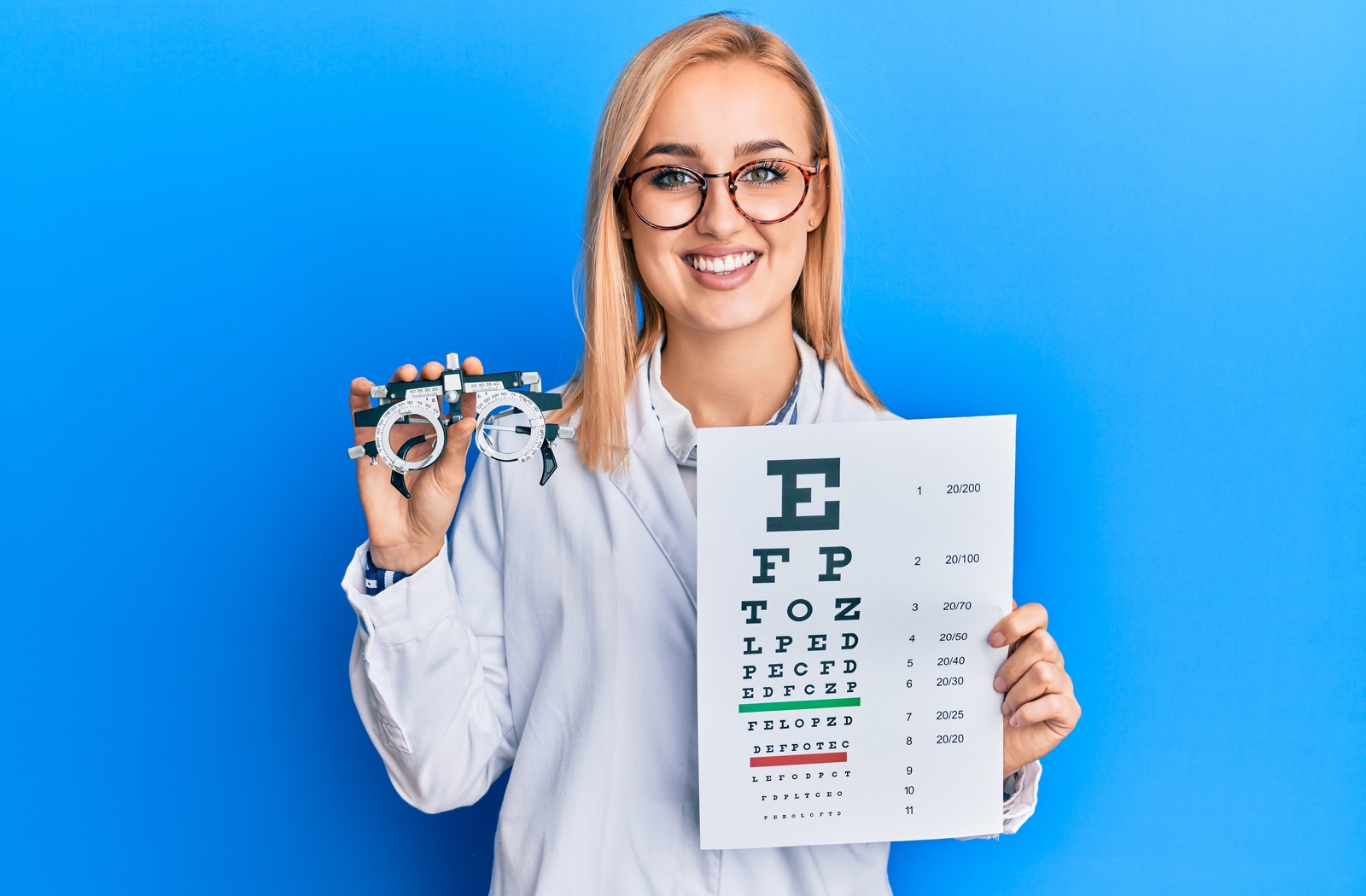Exploring the Newest Technological Innovations in Optometry and What They Mean for Optometrists
In the ever-evolving field of optometry, recent technical developments are reshaping just how professionals approach eye treatment. From the precision of Optical Comprehensibility Tomography to the nuanced insights offered by AI-driven analysis tools, these technologies are establishing brand-new criteria in individual assessment and therapy. Teleoptometry is poised to redefine accessibility, making sure that expertise goes beyond geographical limitations. As these improvements permeate the method, optometrists are confronted with the obstacle of welcoming these tools to improve person results. Yet, the inquiry stays: just how will these technological changes redefine the duties and responsibilities within the profession?
Advancements in Diagnostic Tools
Advancing the field of optometry, technologies in diagnostic devices have actually revolutionized the method eye care specialists examine and diagnose visual problems and eye problems. The past decade has actually witnessed significant technical advancements, allowing more detailed and precise analyses. Optical Comprehensibility Tomography (OCT), for instance, supplies high-resolution cross-sectional pictures of the retina, enabling the early detection of illness such as glaucoma and age-related macular degeneration. This non-invasive imaging method has actually come to be important in modern optometric practice.
An additional secret development is the intro of sophisticated corneal topography systems, which map the surface area curvature of the cornea with precision. These devices are especially beneficial for suitable contact lenses and detecting corneal conditions. Electronic retinal imaging has changed conventional ophthalmoscopy, using comprehensive, panoramic views of the retina that promote extensive visual examinations.
The growth of wavefront aberrometry has actually additionally been crucial, allowing the evaluation of refractive errors with unequaled precision (Eye Doctor Optometrist). This modern technology aids in tailoring restorative lenses and improving surgical results for refractive surgical treatments. Jointly, these diagnostic advancements equip eye doctors to supply remarkable client treatment, ensuring early treatment and customized therapy approaches, inevitably boosting aesthetic health and wellness end results
AI in Individual Administration
Building on the structure of cutting-edge diagnostic tools, the incorporation of fabricated knowledge (AI) in client administration represents a transformative jump for optometry. AI systems are significantly utilized to boost performance, accuracy, and customization in client treatment.
Additionally, AI-driven platforms assist in streamlined individual interactions and management procedures. Automated scheduling, digital examinations, and personalized follow-up strategies not just improve individual fulfillment but likewise maximize time management for experts. These systems can triage clients based upon the urgency of their problems, ensuring that those in important need get prompt interest.
In addition, AI improves decision-making by providing optometrists with evidence-based referrals and treatment pathways. By incorporating data from electronic health documents, AI tools offer understandings that inform scientific decisions, reducing the threat of errors and enhancing patient results. As AI remains to develop, its duty in patient management will likely increase, reshaping the landscape of optometric care.
Breakthroughs in Retinal Imaging
In the realm of optometry, retinal imaging has seen impressive technological advancements that are improving analysis capacities and person treatment. Technologies such as Optical Comprehensibility Tomography (OCT) and fundus digital photography have actually changed just how eye doctors examine the retina and picture. OCT, in specific, supplies high-resolution, cross-sectional images of the retina, enabling the in-depth assessment of its layers. This ability is very useful for very early discovery and management of conditions like glaucoma, diabetic retinopathy, and age-related macular degeneration.
Enhanced imaging techniques like OCT angiography are additional refining analysis precision. This non-invasive strategy maps blood flow in the retina, offering important understandings into vascular health and wellness without the demand for color shots. Additionally, adaptive optics innovation is being incorporated right into retinal imaging systems to remedy eye aberrations, providing unprecedented image quality. Such improvements help with the recognition of min retinal changes that can indicate illness helpful site development.
In addition, developments in expert system are augmenting retinal imaging by making it possible for automatic evaluation of large datasets. These systems help eye doctors in determining patterns a sign of pathology, thereby boosting diagnostic accuracy and effectiveness. Jointly, these developments are transforming retinal imaging into a cornerstone of modern-day eye treatment, boosting results and broadening healing possibilities.
Teleoptometry's Growing Role
Teleoptometry is increasingly becoming a crucial element of eye treatment, driven by innovations in electronic communication and analysis devices. As optometry embraces electronic change, teleoptometry facilitates remote assessments, allowing optometrists to expand their solutions beyond conventional boundaries. This is particularly helpful in country and underserved areas where access to specialized eye care is typically restricted. By leveraging high-resolution video conferencing and advanced retinal imaging, optometrists can carry out comprehensive eye tests from afar, making sure timely diagnosis and therapy.
The combination of expert system (AI) additional useful content improves teleoptometry, enabling the analysis of visual information and helping in the discovery of ocular problems such as glaucoma and diabetic retinopathy. AI-powered algorithms can swiftly analyze complex imaging information, offering eye doctors with valuable insights that reinforce professional decision-making.
In addition, teleoptometry supports continuity of care with seamless combination with digital health and wellness records (EHRs), permitting optometrists to keep thorough person histories. This ensures that individuals obtain customized and consistent treatment even when talking to different specialists.
Despite these benefits, challenges continue to be, including making sure data safety and security and managing patient assumptions. Nevertheless, teleoptometry represents a considerable stride towards more available, efficient, and patient-centered eye treatment. As modern technology evolves, its role is poised to broaden additionally.

Future Trends in Eye Care
A myriad of innovative patterns is readied to reshape the future of eye care, driven by technological innovations and the developing needs of patients. One considerable pattern is the integration of expert system (AI) in diagnostics, which assures to boost the accuracy and effectiveness of eye assessments. AI formulas can examine large amounts of data from retinal pictures, potentially finding problems like diabetic person retinopathy and glaucoma earlier than traditional approaches.
Additionally, tailored medicine is gaining grip in optometry, with hereditary testing educating personalized treatment strategies. This method intends to enhance client end this website results by customizing interventions to specific hereditary profiles. Wearable technology, such as smart contact lenses, is likewise coming up, using real-time surveillance of intraocular pressure or sugar levels, thus supplying constant understandings right into systemic and ocular health and wellness.
The adoption of augmented reality (AR) and virtual reality (VR) in training and client education is one more emerging trend. These technologies provide immersive experiences that can enhance understanding and skills both for optometrists and clients. As these fads develop, optometrists must remain abreast of technical innovations to supply innovative treatment, guaranteeing improved patient results and complete satisfaction in the dynamic landscape of eye treatment.
Conclusion

Jointly, these diagnostic improvements empower optometrists to supply remarkable individual treatment, making sure very early intervention and tailored treatment approaches, ultimately boosting visual wellness outcomes.

As these technologies proceed to progress, optometrists should adjust and integrate them into practice, eventually maximizing process performance and elevating the criterion of eye care provided to individuals.